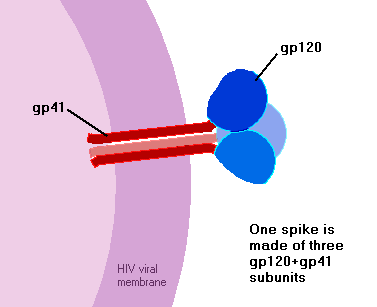Using the new insights, the scientists will try to think of new strategies against the epidemic
Avi Blizovsky

Direct link to this page: https://www.hayadan.org.il/aids280205.html
Scientists said last week that they discovered a key clue to the way the HIV virus mutates to penetrate the immune system, clues that may in the future help in the search for drugs and possibly a vaccine.
The researchers at Boston Children's Hospital and Harvard Medical School in the US have shown that the virus, which has so far attacked 40 million people worldwide, changes its shape and causes changes that allow it to enter cells.
They obtained a three-dimensional image of a protein known as gp120, which serves as part of the virus's envelope, before it changes and binds to receptors called CD4 on the cells the virus wants to infect. "Knowing how gp120 changes its shape is a new route to suppressing the virus - by using ingredients that prevent it from changing its shape," said Steven Harrison, director of the research team.
Peter Kwong Kwong of the Maryland National Medical Center described the study as a breakthrough because the scientists had seen the change in the structure of the gp120 protein to CD4 for at least 20 years. In terms of vaccine design, the structure exposes the shell as a potentially vulnerable site," he said.
Antiretroviral drugs can prolong the lives of AIDS sufferers but are expensive and beyond the reach of millions of people in developing countries. Thus a vaccine is considered the holy grail in the war against the AIDS epidemic, but efforts to find such a vaccine have failed due to the enormous mutagenicity of the virus.
The new findings will also make it possible to understand why it is so difficult to produce a vaccine against HIV, and will help us open up new strategies about new approaches to developing vaccines," explained Harrison.
The scientists have previously been able to describe the structure of the protein after it attaches itself to the cells it wants to attack. The new findings published in the journal Nature provide information on how the molecules organize themselves before the attack.
"We can now compare connected and disconnected forms and try to understand if there are immune abilities that differentiate and may provide a route to a new type of vaccines or drugs" said Harrison.
The scientists revealed the shape of the loose protein by directing an X-ray beam through a crystal form of gp120 from a virus similar to HIV but attacking monkeys.
to report on the subject on a news website
AIDS research expert
https://www.hayadan.org.il/BuildaGate4/general2/data_card.php?Cat=~~~95408871~~~165&SiteName=hayadan
